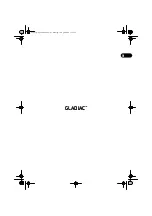
Crystal Vision
Statesman
SYNNER-E 3G User Manual R1.2
64
10/09/2012
Note:
The ATC lock control is only active when a progressive video input is present. When
disabled the field sequence of the interlaced output will free-wheel.
Embedder pattern
The embedders can be set to give either the Sony pattern or the SMPTE pattern.
Audio input control
The audio input tab is where the non-routing audio controls are located. In this menu
simulated LEDs are used to indicate audio present on the sixteen audio channels embedded in
the incoming video stream and the up to sixteen (eight stereo) channels available on the
external AES I/O. Further LEDs are used to indicate whether any of the 32 channels are silent
or contain Dolby E. The mono-stereo, invert and resample controls are also found here.
Audio input
Stereo to Mono conversion
For the purposes of this discussion it is assumed that all inputs are stereo pairs and that each
half of the stereo pair is on a consecutive input i.e. input 1 and input 2 are a stereo pair, input 3
and input 4 are a stereo pair, etc.
The action of converting a stereo pair to a mono output is simply a summing process followed
by a gain correction. The gain correction is necessary because when the two components of a
stereo signal are summed, a 6dB increase in output level will result; this will then need to be
corrected to maintain unity gain.
The action of selection will cause that channel to output the mono sum of it and its associated
channel. The associated channel output will still output its unaltered programme. Either
channel of a pair can be selected for stereo to mono conversion.
Example: Selecting channel 1 for mono conversion will result in channel 1 outputting the
converted mono sum of channels 1 and 2. Channel 2 will remain outputting the original
channel 2 programme. Similarly deselecting channel 1 and selecting channel 2 will cause
channel 2 to output the converted mono programme and channel 1 the original channel 1
programme.












































